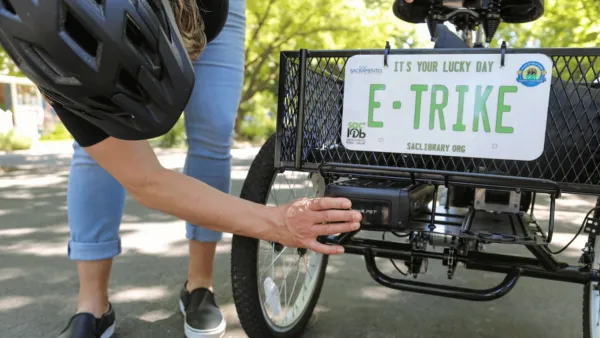Transport for London has a remarkable span of jurisdiction over transportation in the city—allowing TFL to pursue innovative projects with a relative degree of ease.
Ben Plowden, Surface Transport Director of Strategy and Planning at TFL, elaborated on initiatives for the road network and Thames River in an interview with The Planning Report.
Plowden delves into his experience negotiating between a mix of stakeholders, highlighting efforts to prioritize livability on London streets:
"The real challenge for us is trying to work out the optimal use of the road network overall, and of a particular location at a particular time of day, for the social and economic health of the city. We did a very important piece of work with the key road stakeholders about 18 months ago called the Roads Task Force. At the mayor’s request, we brought all of the people who normally talk to us bilaterally—all of the different lobbies—and underwent a process to come up with a solution for managing and operating the network. That hadn’t been done before! It produced a very interesting conversation. People left the room still thinking their interest should come first, but at least understanding that there are multiple users of the network."
Plowden also elaborates on Mayor Boris Johnson's ability to influence land-use decisions, and how those choices can lead to strategic changes in the transit and road networks:
"To support growth in existing areas and particularly growth in East London and outer London, where the land is, he can direct the activity and the spend by determining where capital investment goes and where operational service goes... The Greater London government was very keen to develop [the Docklands] out to the major financial and growth area. The Canary Wharf Group began the process of developing out Canary Wharf. Initially people got in and out of Canary Wharf primarily through the Docklands Light Railway, along with one main road that connects the City to the Docklands. The DLR was clearly not going to be adequate to sustain the amount of growth planned. So we built the extension of the Jubilee Line out to Canary Wharf and all the way to Stratford, where the Olympics took place subsequently. That unlocked that whole development."
FULL STORY: What Can London Learn from & Teach LA Regarding Urban Transport/Mobility?

Planetizen Federal Action Tracker
A weekly monitor of how Trump’s orders and actions are impacting planners and planning in America.

Maui's Vacation Rental Debate Turns Ugly
Verbal attacks, misinformation campaigns and fistfights plague a high-stakes debate to convert thousands of vacation rentals into long-term housing.

Restaurant Patios Were a Pandemic Win — Why Were They so Hard to Keep?
Social distancing requirements and changes in travel patterns prompted cities to pilot new uses for street and sidewalk space. Then it got complicated.

In California Battle of Housing vs. Environment, Housing Just Won
A new state law significantly limits the power of CEQA, an environmental review law that served as a powerful tool for blocking new development.

Boulder Eliminates Parking Minimums Citywide
Officials estimate the cost of building a single underground parking space at up to $100,000.

Orange County, Florida Adopts Largest US “Sprawl Repair” Code
The ‘Orange Code’ seeks to rectify decades of sprawl-inducing, car-oriented development.
Urban Design for Planners 1: Software Tools
This six-course series explores essential urban design concepts using open source software and equips planners with the tools they need to participate fully in the urban design process.
Planning for Universal Design
Learn the tools for implementing Universal Design in planning regulations.
Heyer Gruel & Associates PA
JM Goldson LLC
Custer County Colorado
City of Camden Redevelopment Agency
City of Astoria
Transportation Research & Education Center (TREC) at Portland State University
Jefferson Parish Government
Camden Redevelopment Agency
City of Claremont





























